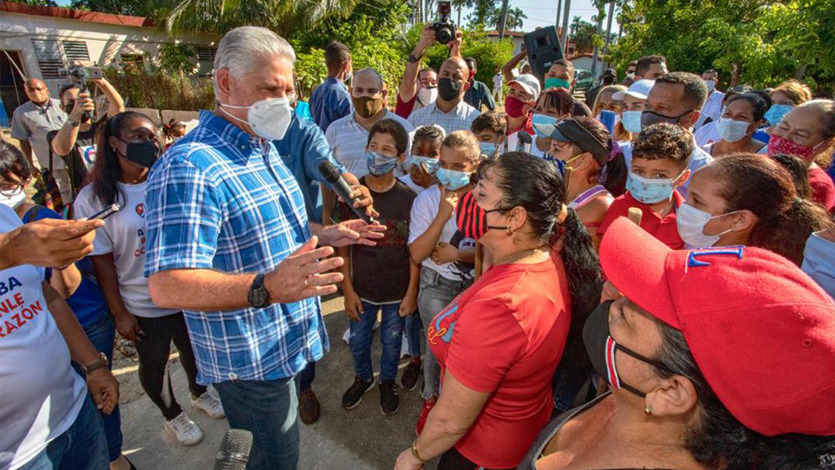
President Díaz-Canel's visit to vulnerable neighborhood.
By María Josefina Arce
In recent days, Cuban President Miguel Díaz Canel has made references to important aspects of the transformation of neighborhoods, a strategy that has always been present in the authorities' will to improve the living conditions of citizens and to take care of the most vulnerable people.
Let us refresh the memory of those who try to present this effort as something of the moment. And in this sense, the Cuban president recalled that the background of this work is in the thinking and, above all, in the actions of the historic leader of the Revolution, Fidel Castro.
Throughout decades, Fidel was a constant presence in the communities, and not only giving his support in the event of meteorological phenomena or other situations. Fidel would arrive and gather a crowd, and amidst the popular rejoicing he would not fail to listen attentively to the proposals of the villagers.
He was also the promoter of the movement of social workers, who went to the poorest areas to learn about the needs and concerns of its inhabitants and to make the way to solutions viable.
The work of these men and women, mostly young people, has made it possible to learn about the situation of families, people with disabilities, pensioners and pregnant women, among other segments of the population.
And although the persistence of the U.S. blockade and adverse international conditions have hindered the necessary responses on numerous occasions, this work has continued to be perfected and, to the extent of the possibilities and resources available, it has also involved other actions.
Neighborhoods are today a scenario of constant transformation, based on the participation of citizens, their criteria and suggestions, because, as Díaz Canel has stressed, dialogue is essential.
It is vital to ensure that the beneficiaries are direct and active participants in both structural and behavioral changes.
As Díaz Canel explained, this is a comprehensive program that emphasizes the cultural and spiritual growth of the people, and takes into account the creation of jobs and development opportunities for the inhabitants of these communities.
In this transforming process, the contribution of the state and non-state entities located in these places, and the universities, with their vast wealth of knowledge, acquires a decisive importance.
Promoting the country's development from the neighborhoods is the objective of this program, which is being improved every day, taking into account the best practices of all these years.

